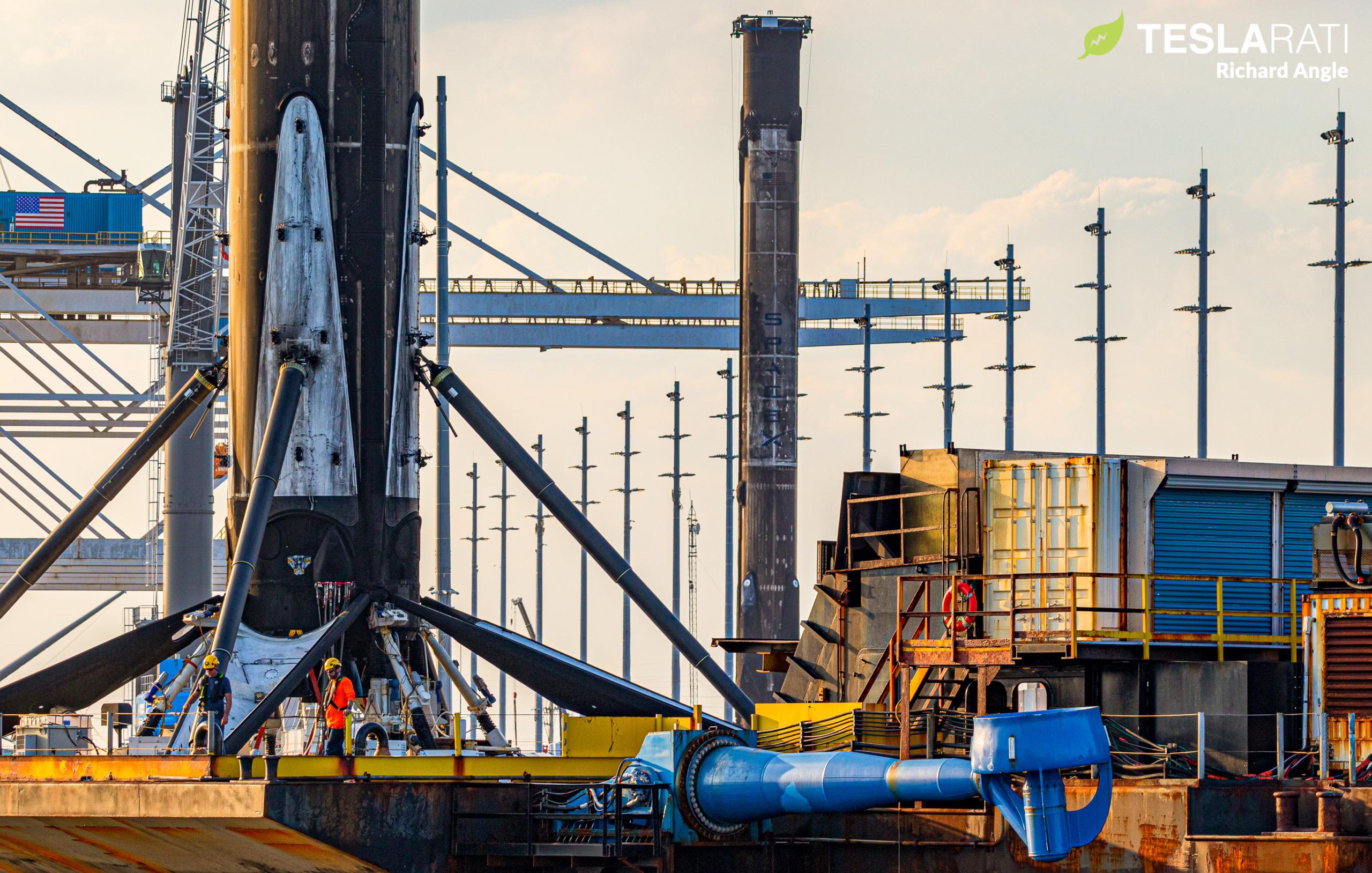
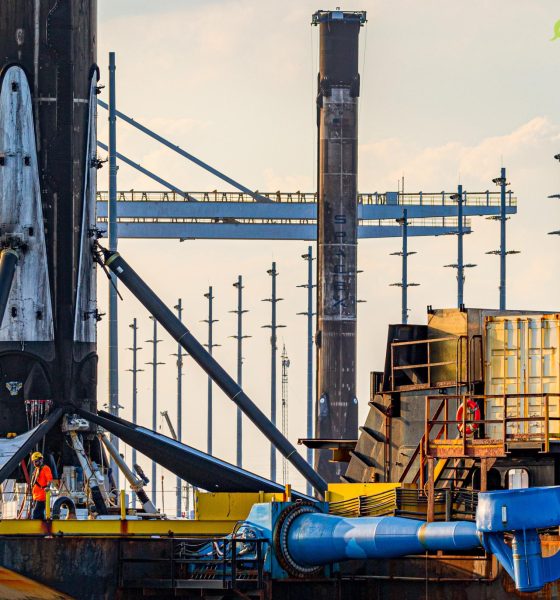
News
SpaceX rocket boosters line up in port for the first time after back-to-back launches
For the first time ever, two SpaceX Falcon 9 boosters – fresh off of two successful Starlink launches and landings – have met back at Port Canaveral, creating the first rocket ‘traffic jam’ of its kind.
On March 11th, Falcon 9 booster B1058 stuck its sixth launch and landing after supporting SpaceX’s sixth dedicated Starlink launch (Starlink-20) this year. 74 hours later, a separate Falcon 9 rocket lifted off from SpaceX’s second East Coast launch pad, successfully sending another batch of 60 Starlink satellites (Starlink-21) on their way to orbit. For its role in the mission, booster B1051 became the first Falcon first stage to launch and land nine times – just one shy of a ten-flight rocket reusability goal SpaceX has been chasing for years.
Now, aside from setting the new standard for Falcon reusability, placing 120 satellites into orbit in three days, and breaking SpaceX’s record for the shortest turnaround between two East Coast launches, the back-to-back Starlink launches have left both Falcon 9 boosters in the right place and right time to cross paths as they prepare for future flights.
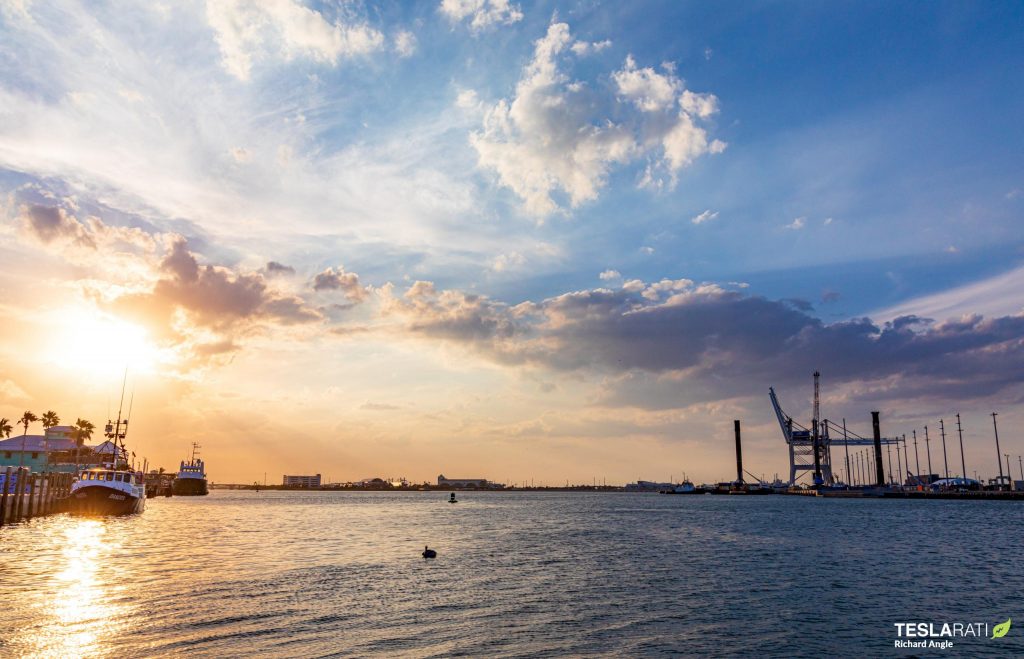
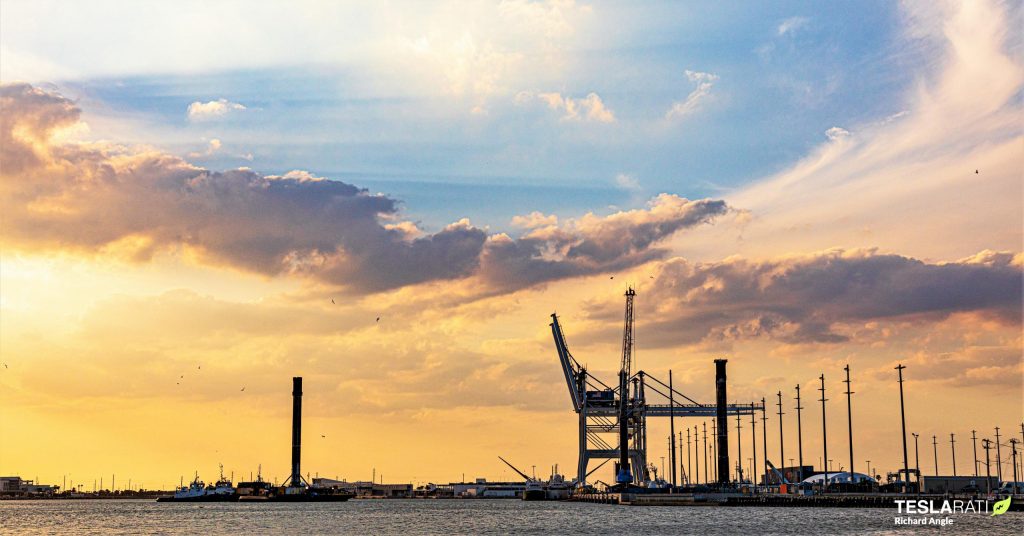
As SpaceX began to ramp up its orbital launch cadence – largely thanks to Starlink – throughout 2020, it become clear that the company would eventually start to find new pressure points as it pushed its fleet of reusable rockets and their recovery assets to new limits. In 2021, that intentional exertion of stress across the broader SpaceX launch ‘pipeline’ has become even clearer.
A mere 10 weeks into 2021, SpaceX has already completed eight orbital launches, averaging one mission every nine days or 40 launches per year if extrapolated through the end of 2021. Just two days prior to Falcon 9 booster B1058’s arrival back at Port Canaveral after its successful Starlink-20 launch, Falcon 9 booster B1049 – last tasked with launching Starlink-17 on March 4th – wrapped up its port processing and was transported by road back to Cape Canaveral Air Force Station (CCAFS) or Kennedy Space Center (KSC) to prepare for its ninth flight.
At that point, it became clear it was just a matter of time before two boosters would simultaneously occupy SpaceX’s Port Canaveral berths. Two days later, record-breaking Falcon 9 booster B1051 arrived back in port and was greeted by booster B1058 – legs retracted, standing vertical, and waiting to be ‘broken over’ (brought horizontal) for transport.
It’s hard to imagine a better or (pardon the buzzword) more synergistic pair of boosters to appear in port together. On their separate launch debuts, Falcon 9 B1051 supported Crew Dragon’s spectacularly flawless uncrewed launch debut, while Falcon 9 B1058 became the first private rocket in history to launch US astronauts 14 months later. Known as Demo-1 and Demo-2, those two missions collectively mark arguably the most significant milestone in the history of modern US spaceflight, ending a decade-long period where the US was unable to launch its own astronauts.
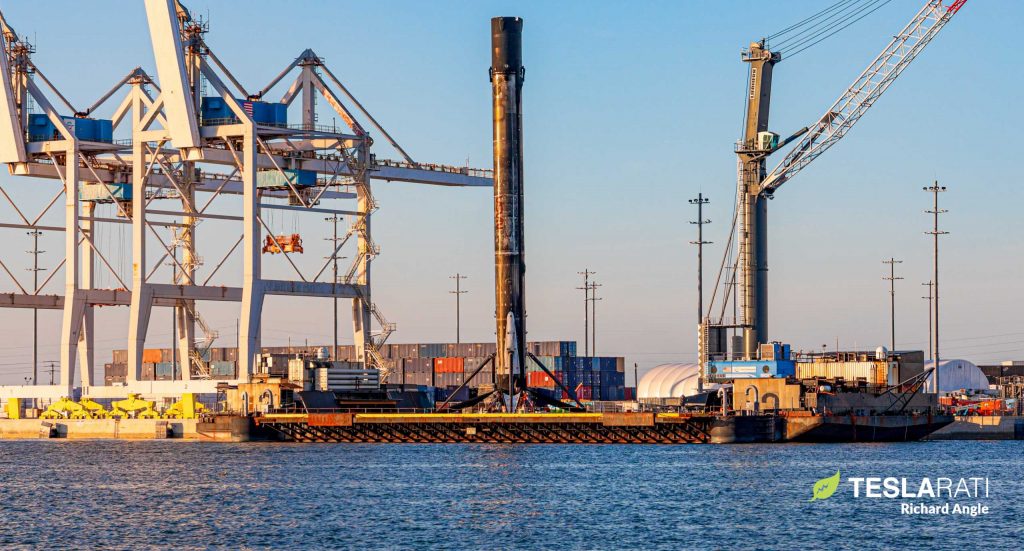
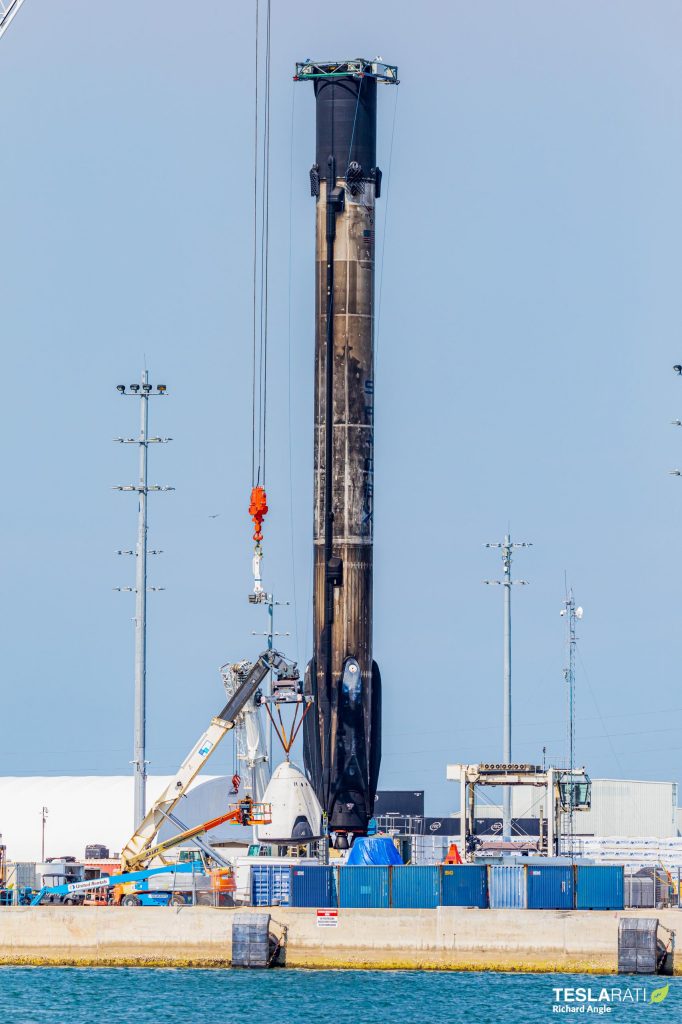
Just a week after the rocket’s 2019 Demo-1 launch debut, Falcon 9 B1051 is SpaceX’s new booster fleet ‘life leader’ (the most-flown rocket) after averaging one launch ever 11 weeks for the last two years. Aside from supporting Cargo Dragon 2’s launch debut last December, Falcon 9 B1058 has flown six times, averaging an even more impressive one launch every eight weeks. Together, the two boosters have aced 15 orbital-class launches roughly 190 metric tons of satellites and Dragon spacecraft into orbit in their two-year career, significantly more than the maximum payload of Saturn V – the largest rocket to successfully launch.
Falcon 9 B1051 could reportedly fly for the tenth time as early as April 2021.
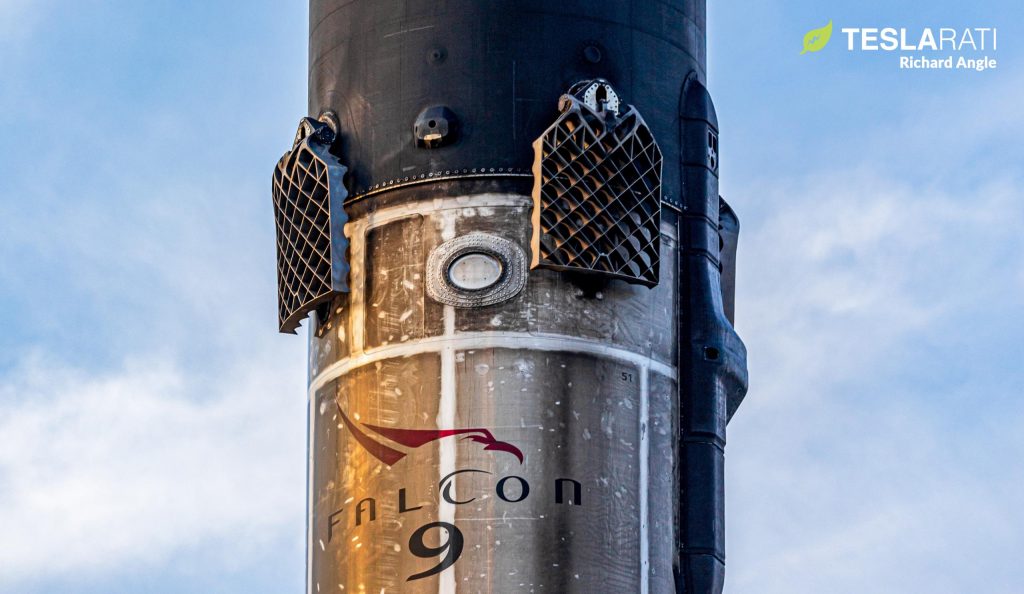





News
Tesla FSD fleet is nearing 7 billion total miles, including 2.5 billion city miles
As can be seen on Tesla’s official FSD webpage, vehicles equipped with the system have now navigated over 6.99 billion miles.

Tesla’s Full Self-Driving (Supervised) fleet is closing in on almost 7 billion total miles driven, as per data posted by the company on its official FSD webpage.
These figures hint at the massive scale of data fueling Tesla’s rapid FSD improvements, which have been quite notable as of late.
FSD mileage milestones
As can be seen on Tesla’s official FSD webpage, vehicles equipped with the system have now navigated over 6.99 billion miles. Tesla owner and avid FSD tester Whole Mars Catalog also shared a screenshot indicating that from the nearly 7 billion miles traveled by the FSD fleet, more than 2.5 billion miles were driven inside cities.
City miles are particularly valuable for complex urban scenarios like unprotected turns, pedestrian interactions, and traffic lights. This is also the difference-maker for FSD, as only complex solutions, such as Waymo’s self-driving taxis, operate similarly on inner-city streets. And even then, incidents such as the San Francisco blackouts have proven challenging for sensor-rich vehicles like Waymos.
Tesla’s data edge
Tesla has a number of advantages in the autonomous vehicle sector, one of which is the size of its fleet and the number of vehicles training FSD on real-world roads. Tesla’s nearly 7 billion FSD miles then allow the company to roll out updates that make its vehicles behave like they are being driven by experienced drivers, even if they are operating on their own.
So notable are Tesla’s improvements to FSD that NVIDIA Director of Robotics Jim Fan, after experiencing FSD v14, noted that the system is the first AI that passes what he described as a “Physical Turing Test.”
“Despite knowing exactly how robot learning works, I still find it magical watching the steering wheel turn by itself. First it feels surreal, next it becomes routine. Then, like the smartphone, taking it away actively hurts. This is how humanity gets rewired and glued to god-like technologies,” Fan wrote in a post on X.
News
Tesla starts showing how FSD will change lives in Europe
Local officials tested the system on narrow country roads and were impressed by FSD’s smooth, human-like driving, with some calling the service a game-changer for everyday life in areas that are far from urban centers.

Tesla has launched Europe’s first public shuttle service using Full Self-Driving (Supervised) in the rural Eifelkreis Bitburg-Prüm region of Germany, demonstrating how the technology can restore independence and mobility for people who struggle with limited transport options.
Local officials tested the system on narrow country roads and were impressed by FSD’s smooth, human-like driving, with some calling the service a game-changer for everyday life in areas that are far from urban centers.
Officials see real impact on rural residents
Arzfeld Mayor Johannes Kuhl and District Administrator Andreas Kruppert personally tested the Tesla shuttle service. This allowed them to see just how well FSD navigated winding lanes and rural roads confidently. Kruppert said, “Autonomous driving sounds like science fiction to many, but we simply see here that it works totally well in rural regions too.” Kuhl, for his part, also noted that FSD “feels like a very experienced driver.”
The pilot complements the area’s “Citizen Bus” program, which provides on-demand rides for elderly residents who can no longer drive themselves. Tesla Europe shared a video of a demonstration of the service, highlighting how FSD gives people their freedom back, even in places where public transport is not as prevalent.
What the Ministry for Economic Affairs and Transport says
Rhineland-Palatinate’s Minister Daniela Schmitt supported the project, praising the collaboration that made this “first of its kind in Europe” possible. As per the ministry, the rural rollout for the service shows FSD’s potential beyond major cities, and it delivers tangible benefits like grocery runs, doctor visits, and social connections for isolated residents.
“Reliable and flexible mobility is especially vital in rural areas. With the launch of a shuttle service using self-driving vehicles (FSD supervised) by Tesla in the Eifelkreis Bitburg-Prüm, an innovative pilot project is now getting underway that complements local community bus services. It is the first project of its kind in Europe.
“The result is a real gain for rural mobility: greater accessibility, more flexibility and tangible benefits for everyday life. A strong signal for innovation, cooperation and future-oriented mobility beyond urban centers,” the ministry wrote in a LinkedIn post.
News
Tesla China quietly posts Robotaxi-related job listing
Tesla China is currently seeking a Low Voltage Electrical Engineer to work on circuit board design for the company’s autonomous vehicles.

Tesla has posted a new job listing in Shanghai explicitly tied to its Robotaxi program, fueling speculation that the company is preparing to launch its dedicated autonomous ride-hailing service in China.
As noted in the listing, Tesla China is currently seeking a Low Voltage Electrical Engineer to work on circuit board design for the company’s autonomous vehicles.
Robotaxi-specific role
The listing, which was shared on social media platform X by industry watcher @tslaming, suggested that Tesla China is looking to fill the role urgently. The job listing itself specifically mentions that the person hired for the role will be working on the Low Voltage Hardware team, which would design the circuit boards that would serve as the nervous system of the Robotaxi.
Key tasks for the role, as indicated in the job listing, include collaboration with PCB layout, firmware, mechanical, program management, and validation teams, among other responsibilities. The role is based in Shanghai.
China Robotaxi launch
China represents a massive potential market for robotaxis, with its dense urban centers and supportive policies in select cities. Tesla has limited permission to roll out FSD in the country, though despite this, its vehicles have been hailed as among the best in the market when it comes to autonomous features. So far, at least, it appears that China supports Tesla’s FSD and Robotaxi rollout.
This was hinted at in November, when Tesla brought the Cybercab to the 8th China International Import Expo (CIIE) in Shanghai, marking the first time that the autonomous two-seater was brought to the Asia-Pacific region. The vehicle, despite not having a release date in China, received a significant amount of interest among the event’s attendees.








